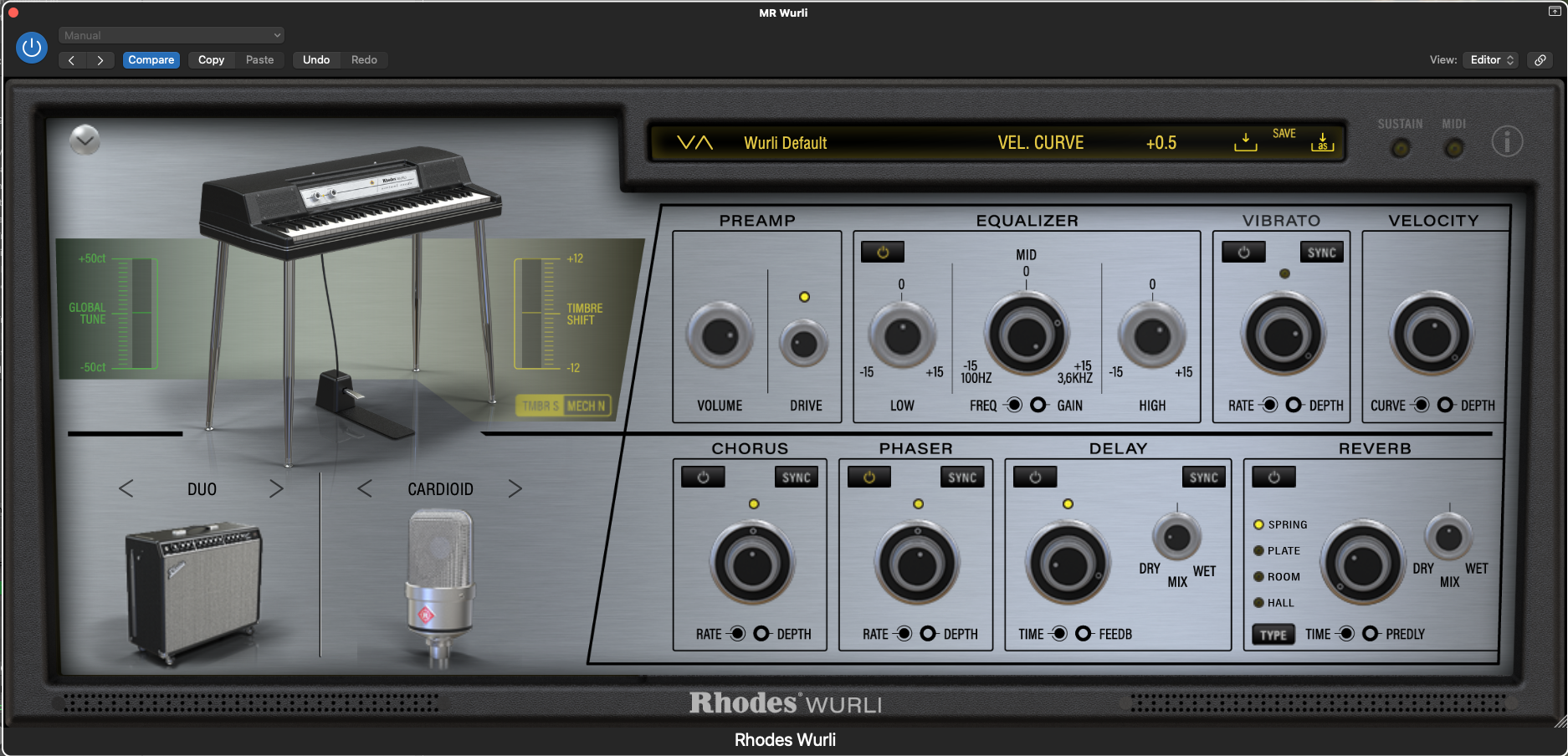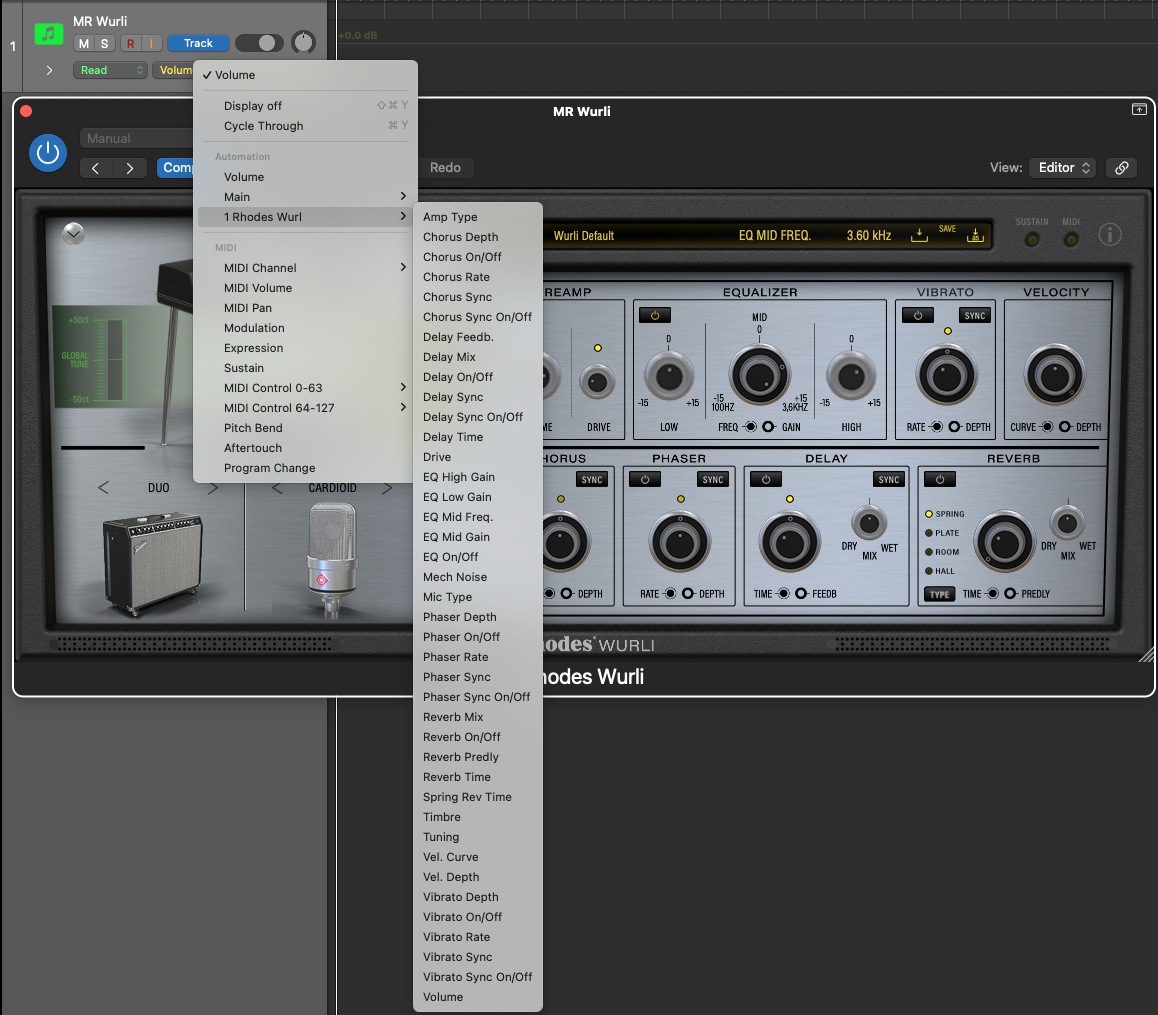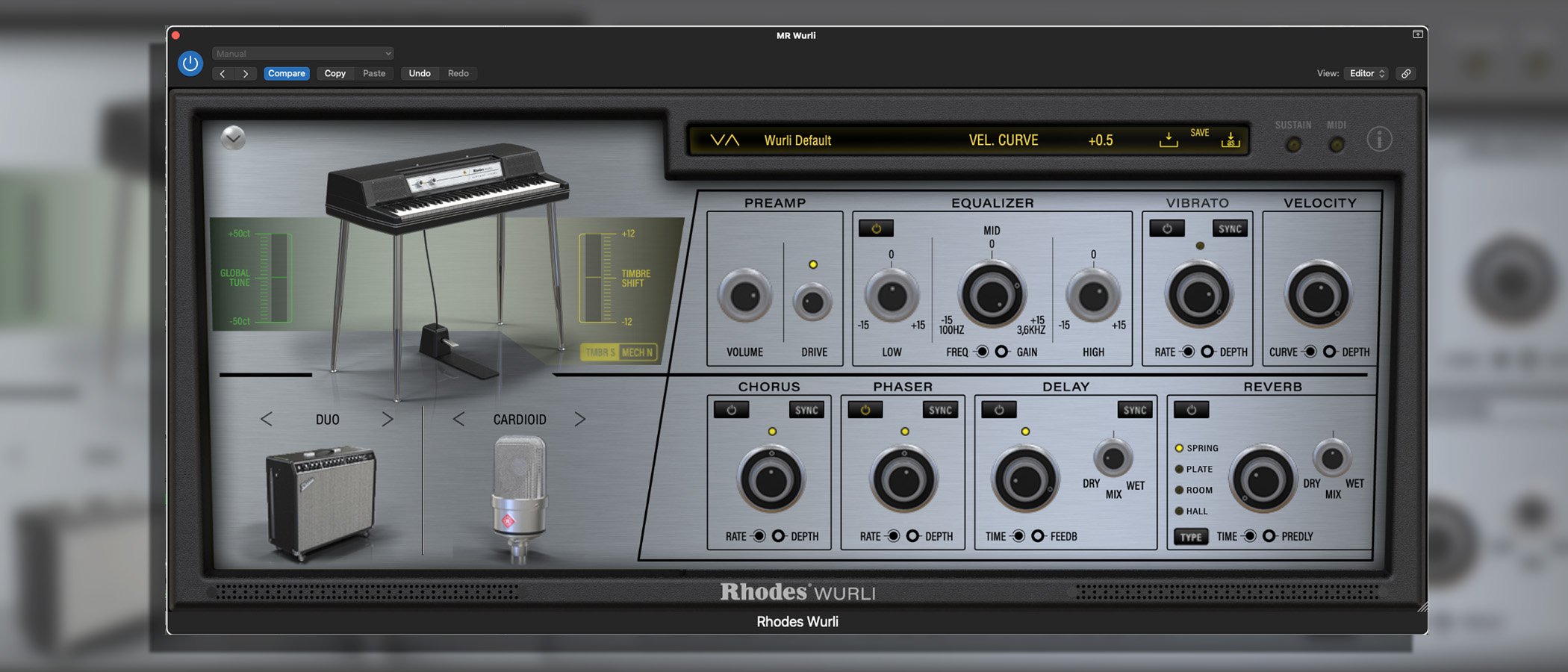MusicRadar Verdict
It is brilliant to see Rhodes embracing the Wurli, in plugin form. The clean and stylish interface, is a gateway to the classic sound of a legendary instrument. Its authenticity is beguiling, as is its playability.
Pros
- +
Highly authentic Wurlitzer recreation, in software form.
- +
Packed full of useful and impressive effects.
- +
Microphone and speaker models onboard.
- +
Simple design, but laden with great features.
Cons
- -
No standalone version.
- -
Effects on/off indicators could be clearer and/brighter.
MusicRadar's got your back
What is it?
If you could ever imagine a stand-off between the two electric piano heavyweights of the world, the contenders would unquestionably be the Rhodes electric piano, and the Wurlitzer. Anyone with experience of these classics will express their love of either instrument, while in the next sentence, bemoaning how much their back hurts from the lifting! Hence, the appeal of software is incredibly agreeable.
Rhodes made great waves a few years ago, with its reignition of the Rhodes electric piano, in its highly celebrated Mk8 form. This was swiftly followed by a plugin version, that brought unparalleled degrees of control to a Rhodes in software. It’s therefore terrific to know that the same team behind that plugin, are powering the new Wurli plugin.
But what is a Wurli, and how is it different to a Rhodes? Both the Rhodes and the Wurlitzer are known as electro-mechanical pianos, meaning that they both employ physical keys and hammers. The biggest difference, at least from a tone perspective, is that Rhodes hammers hit tines, whereas Wurlitzer hammers hit reeds. This generates a signal which is amplified via a pickup, creating a subtly different sound from each instrument.
The new Wurli plugin has been sampled from a model 200A, which is probably the most popular Wurli model in the wild. The 200A also adopts small speakers, at either end of the piano, which was always nice for acoustic feedback, but could present challenges for recording, which is something that Rhodes has thankfully addressed.

Performance
As the plugin window opens, the clean and retro graphics display a Wurli on the left-hand side. The instrument’s range is limited to the original 64-notes of the 200A. Arguably, it may have been nice to extend this range, but there is an equal argument for being faithful to the original, which we have to fully respect.
The interface is beautifully clear and concise, with quite a bit of control for a relatively simplistic instrument. In its original form, the Wurli only offered a mono signal.
Rhodes has included a meticulous model of the aforementioned speakers, which adopt a very usable mid-range quality that cuts beautifully in a mix. However, if you want something a little smoother, you can switch the speaker model to a twin amplifier, or work with a flat/direct signal. You can also select from dynamic or condenser microphone signals, for more choice over the tone.
Want all the hottest music and gear news, reviews, deals, features and more, direct to your inbox? Sign up here.
Tonal shifts
Talking of tone, you can easily miss the arrow located to the left of the instrument graphic. Clicking here reveals some highly relevant controls; on the left, there is a global tuning control, by way of a sliding scale that goes upward and downwards.
On the right, two switchable fields allow for control of the instrument’s timbre, and the amount of mechanical noise in the signal. These can be subtle, if required, or incredibly obvious if pushed to their maximum thresholds.
Combining this element with the amplifier and microphone modelling, you can fine-tune your Wurli right at the instrument stage, which is a boon for mixing.
Effects
Toward the right-hand side of the plugin window is found a barrage of associated effects, preamp settings and a dedicated EQ.
The preamp is first up; in certain scenarios, it's nice to add some bite to a Wurli, and the preamp offers a superbly crunchy overdrive, with a dedicated volume control. The way that the overdrive reacts with the playing velocity is incredibly responsive. There were a couple of really beautiful sweet spots that we enjoyed, but you can distort your signal to your own taste, dialling in the drive as you see fit.
Next door, the three-band equaliser provides a mid-parametric, alongside a high and low boost or cut. We particularly enjoyed placing the mid frequency control under automation, within the DAW, although you can access all of the Wurli’s other parameters this way too.
Meanwhile, the Vibrato effect supplies both rate and depth, along with the ability to sync to your DAW. It's worth noting that the vibrato affects the amplitude of the signal, rather than the pitch, and slightly disappointingly, does not offer a ping-pong style tremolo. To be fair, this was always more of a Rhodes effect, and could certainly be applied elsewhere, within the DAW.
As we are dealing with a mono signal, the thickness provided by the chorus effect is ideal for filling out the stereo sound-stage. It sounds very smooth, but can quickly shift to an overbearing point if pushed too far – it’s another matter of taste. It’s a similar story with the phaser, which is a splendid incarnation of that effect.
However, our big effect-favourite is the delay, which adopts tape-like mentalities, with some incredibly extended delay times. Couple this with the automation control within your DAW, and an impressive backend reverb (of which there are four different styles of reverberation) and it's quite a compendium of onboard effects.

Keyboard control
In our view, to get the absolute most from the Wurli plugin, you'll need an appropriate keyboard. We were auditioning Wurli with an 88-note, fully-weighted controller, and it felt superb to play, straight out of the virtual box. However, if your controller is lighter in weight, response could be very different.
Thankfully, Wurli has an immediate option to control the velocity curve and depth, right on the front of the instrument panel. We didn't really need to do anything with our weighted setup, but there would definitely be a rationale for altering this setting, to suit your setup or playing style.
Playing experience
We have been lucky enough to own and play many different electro-mechanical instruments, and it has to be noted that Wurli stacks up exceptionally well against the originals. The highlights included the extraordinary sense of playing control over the plugin, which had us momentarily forgetting that we were playing software.
Arguably, it's a relatively simple plugin, but part of the joy of the instrument is starting with a basic default sound, and building your signal to suit your designs. There are a number of included patches, which are worth auditioning, but you can also save your own presets, should you hit upon your perfect Wurli sound.
Verdict
Wurli is undoubtedly one of the best-in-class electric piano plugins we have auditioned. The control element is sublime, and that is quickly reflected in the sound, which seems to react to every playing nuance you can throw at it. If you like the Wurli sound (and who doesn’t) this is about as authentic as you will find, with all the control you need over sonics and playability.
Hands-on demos
Rhodes Piano
Alternatives
Based on the Wurlitzer model 140B, Wurlybird also provides a host of effects options, presented in a playful graphic style.
Read the full Cherry Audio Wurlybird review
Exploiting Arturia’s physical modelling technology, Arturia’s plugin is also based on the model 200.
Read the full Arturia Wurli V review
Specifications
Price | £90 |
Key features | 64-notes of authentic Wurlitzer electro-mechanical piano Full suite of onboard effects, including drive Amplifier and microphone modelling Immediate velocity control |
Requirements | Mac & PC – VST, AU and AAX plugin formats |
Contact |
Roland Schmidt is a professional programmer, sound designer and producer, who has worked in collaboration with a number of successful production teams over the last 25 years. He can also be found delivering regular and key-note lectures on the use of hardware/software synthesisers and production, at various higher educational institutions throughout the UK
You must confirm your public display name before commenting
Please logout and then login again, you will then be prompted to enter your display name.




